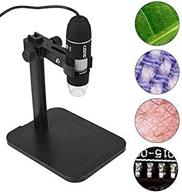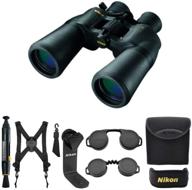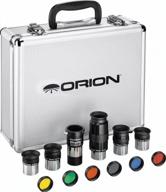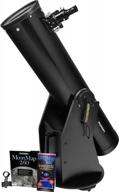
Review on 🔭 Celestron StarSense Explorer DX 130AZ Smartphone App-Enabled Telescope | StarSense App for Easy Star, Planet, and Celestial Discoveries | 130mm Newtonian Reflector | iPhone & Android Compatible by Shari Smith

The Celestron StarSense Explorer DX 130AZ is a fantastic telescope for beginners!
I have been observing the night sky with telescopes for 35 years, have almost 20 different telescopes and I have often been asked for advice by people looking to buy a beginner's telescope. When I heard about the new range of Celestron StarSense Explorer telescopes I was very intrigued and decided to buy one to try. Spending $399 on anything is way too expensive. Spending €399 on a telescope is relatively cheap compared to most telescopes on the market and is certainly in the price range of other entry-level telescopes. So what do I think of the Celestron StarSense Explorer DX 130AZ? Short answer: As a beginner telescope, I really liked it! If you want to know why, read on. First let me say that the telescope was well packaged. It was packaged in an attractive box with the components packed in small boxes. All of this was packaged in a standard shipping carton. The instructions made assembly very easy, although I'm sure it won't hurt that I've built many telescopes. I've dabbled in this although trying to get the point of view of someone new to telescopes. Having said this, I came to a hasty conclusion which I gladly got wrong. The StarSense Explorer DX 102AZ and 130AZ telescopes are equipped with slow motion controls to move the telescope left and right and up and down. Every slow motion controller I've ever seen is attached to the mount with visible little thumbscrews. The slow motion controls on DX telescopes use countersunk hex screws that are not immediately visible. This is in no way negative. I only mention this for those who, like me, expect to see typical thumbscrews. Unpacking everything and assembling the telescope took less than 30 minutes. The Celestron StarSense Explorer DX 130AZ is a 5.1" reflecting telescope on an alt-azimuth mount with a height-adjustable tripod. It comes with two entry-level eyepieces; 25mm for 26x magnification and 10mm for 65x magnification. It comes also with a Celestron StarPointer red dot finder. The StarPointer is very similar to the finders I use in my more expensive and sophisticated telescopes. This makes it very easy to aim the telescope at targets whose location you know without having to open the StarSense app It needs to be aligned with the telescope, which can be done relatively easily by following the instructions that come with it. In my opinion, the real strength of the Celestron StarSense Explorer range of telescopes is the StarSense app. Using this app on your smartphone in combination with this A quality, entry-level telescope that makes finding objects in the night sky a pleasure with almost no effort Sense app helps you align the night sky in the app with the direction of your telescope. Once aligned, click on the StarSense icon at the bottom of your smartphone's screen, select the object you wish to view and the app will guide you to manually move the crosshairs to the selected object. This is done with great precision, which I will discuss later. It also includes a description, observing tips, and data for each object while you are at the telescope. StarSense is a very intuitive and informative app. I chose the Celestron Explorer DX 130AZ because it has the largest aperture in this new line of telescopes. The aperture of a telescope is the actual power of a telescope. The larger the aperture, the more light it collects and the brighter objects become. The 130mm (5.1 inch) telescope has enough aperture to keep the avid observer occupied for years. Don't get hung up on the advertised telescope magnification. After years of using large 18" and 25" reflecting telescopes that required stepladders and stools to see through, I now do all my observing with 4", 5" and 6" refractoscopes. On my first night with the Celestron StarSense Explorer DX, I observed 20 different objects including the planet Venus, the Orion Nebula, the Pleiades star cluster, four galaxies (M65, M66, M81, M82) and a few other open star clusters. I used the StarSense app to guide me to each object. Using the supplied 25mm eyepiece, each object was placed in the center of the field of view. I was very impressed with how accurate it was! I currently have a few different expensive computer controlled GoTo telescope mounts that will automatically point any telescope I have on it at a chosen object. The StarSense app leveled the DX 130AZ with more consistent accuracy than my GoTo telescopic mounts. Optically, the stars were clear and objects looked like what I would expect from my backyard with more than one street light, making it difficult for my eyes to adjust to the darkness. To truly experience the potential of any telescope, observe from the darkest spot and allow your eyes to adjust to the darkness. Use a red flashlight if possible. Also use the night vision mode in the StarSense app. This turns your smartphone screen red, which helps your eyes adjust to the dark. This makes the Celestron StarSense Explorer DX 130AZ surprisingly comfortable and easy to use. This is the most fun I've had with a telescope in this price range and I think it could change beginner astronomy in a very positive way. What an interesting way to learn about the universe! I can only imagine how different my first few years under the stars would have been if I had combined this telescope with a smartphone and the StarSense app. I highly recommend it to anyone looking to start their journey into amateur astronomy!
- Great for outdoor activities
- Not sure
New products
Comments (0)
Top products in 🔭 Binoculars & Scopes

CISNO USB Digital Microscope: 2MP, 1000X Magnification, 8 LED, Windows-Compatible

25 Review

Nikon ACULON 10 22X50 Binoculars Harness

12 Review

Enhance Your Stargazing Experience With Orion'S Premium Telescope Accessory Kit (1.25-Inch, Silver)

21 Review

Explore The Night Skies With The Orion SkyQuest XT8 Classic Dobsonian Telescope

12 Review






